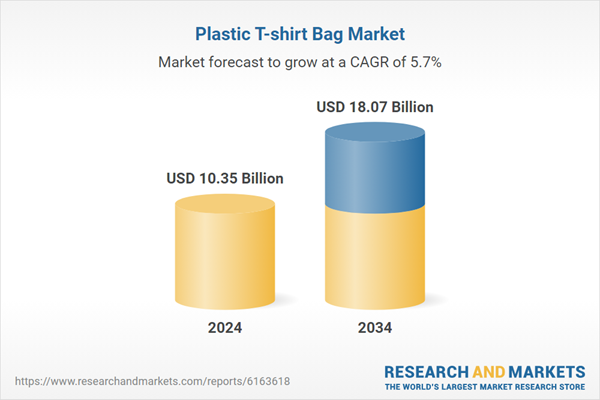Demand is being reinforced by businesses seeking affordable and scalable packaging options that meet both logistical and marketing needs. Plastic T-shirt bags offer a reliable solution for high-volume operations, especially in sectors like retail, foodservice, and grocery, where cost-efficiency and durability are crucial. These bags not only simplify the packaging and carrying process but also serve as an effective medium for brand visibility. With the ability to customize designs, colors, and prints, companies are turning everyday utility items into brand touchpoints that improve customer recall. Additionally, their lightweight nature and space-saving benefits during storage and transport reduce operational costs.
In 2024, the polyethylene (PE) segment held a 60.1% share 2024 and is expected to grow at a CAGR of 7.5% through 2034. PE bags remain the preferred material due to their lightweight nature, low manufacturing cost, and compatibility with recycling systems where infrastructure exists. Their flexibility in printing and customization continues to make them ideal for various industries, including food, cosmetics, and retail. According to global packaging reports, PE’s role in flexible packaging remains dominant, supported by its adaptability and wide acceptance in the value chain.
The distributors and wholesalers segment held 37.8% and generated USD 3.91 billion in 2024. These intermediaries play a critical role in bulk supply by offering logistical support, price efficiency, and inventory management to end-use sectors like food service, retail chains, and public service programs. Their large-scale operations create streamlined access to plastic bags for institutional and commercial buyers, enhancing supply chain consistency and reducing procurement costs.
United States Plastic T-shirt Bag Market generated USD 1.44 billion in 2024 and is estimated to grow at a CAGR of 4.1% by 2034. Growth is driven by demand across retail, healthcare, and food industries. Although multiple states have implemented bans or restrictions on certain plastic bags, awareness of compostable and reusable alternatives is rising. At the same time, retail chains continue to use certified polyethylene and recycled plastic bags that align with regulatory standards, maintaining steady demand within the legal framework.
Key companies in the Global Plastic T-shirt Bag Market include Tu Phuong Plastic, Symphony Polymers Pvt Ltd., Novolex, Artek Packaging, BioBag Americas Inc., ProAmpac, Hanoi Plastic Bag JSC, Acar Ambalaj, Hosgor Plastik, FF-Packaging, International Plastics Inc., AplasticBag.com, Advance Polybag, Inc., and Shanghai Yifu Packing Products Group Co., Ltd. To reinforce their market presence, companies are focusing on several strategies, including diversification of product lines with biodegradable and compostable options to address regulatory and consumer concerns. Many are upgrading manufacturing technologies to improve output efficiency and reduce environmental impact. Customization services for branding are being expanded to meet the growing demand from retailers. Distribution networks are being optimized to enhance responsiveness and ensure timely delivery in high-volume markets.
This product will be delivered within 2-4 business days.
Table of Contents
Companies Mentioned
The companies profiled in this Plastic T-shirt Bag market report include:- Acar Ambalaj
- Advance Polybag, Inc.
- AplasticBag.com
- Artek Packaging
- BioBag Americas Inc.
- FF-Packaging
- Hanoi Plastic Bag JSC
- Hosgor Plastik
- International Plastics Inc.
- Novolex
- ProAmpac
- Shanghai Yifu Packing Products Group Co., Ltd.
- Symphony Polymers Pvt Ltd.
- Tu Phuong Plastic
Table Information
| Report Attribute | Details |
|---|---|
| No. of Pages | 190 |
| Published | July 2025 |
| Forecast Period | 2024 - 2034 |
| Estimated Market Value ( USD | $ 10.35 Billion |
| Forecasted Market Value ( USD | $ 18.07 Billion |
| Compound Annual Growth Rate | 5.7% |
| Regions Covered | Global |
| No. of Companies Mentioned | 15 |









